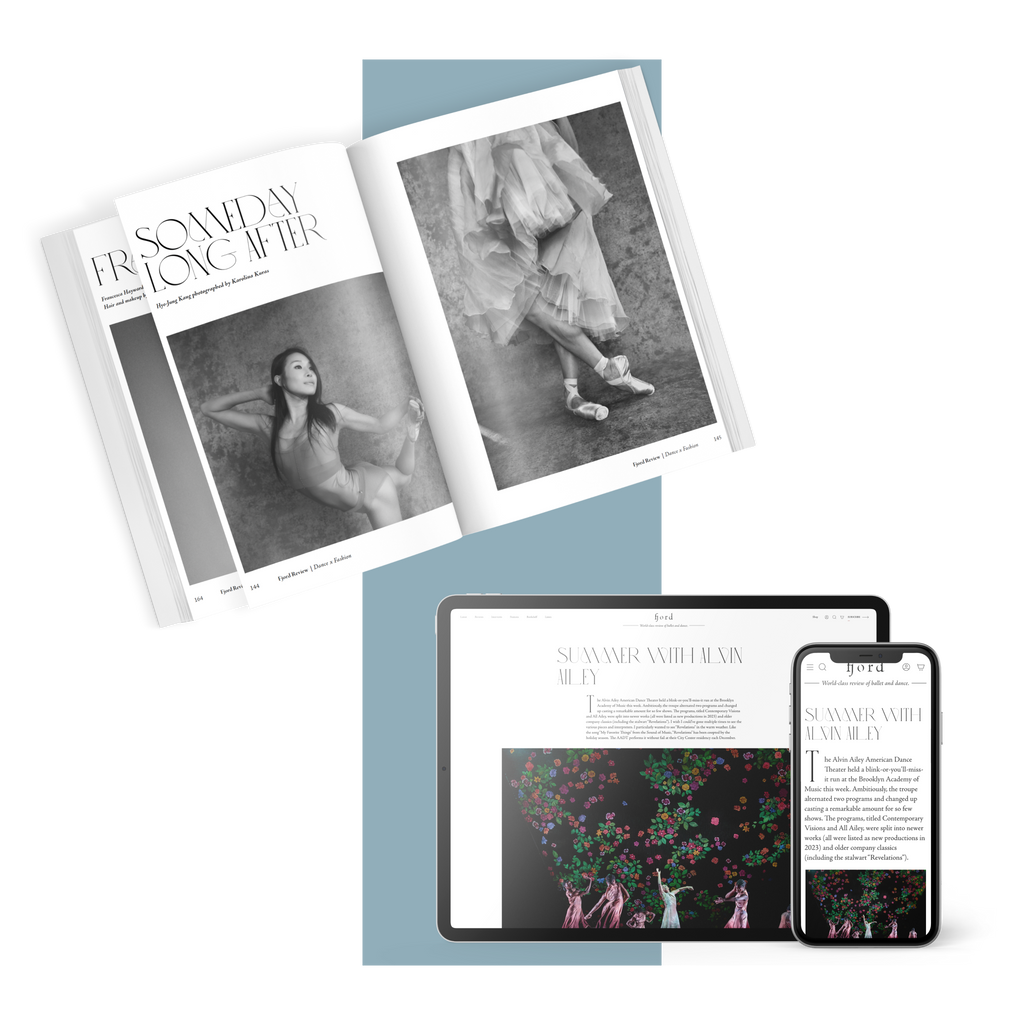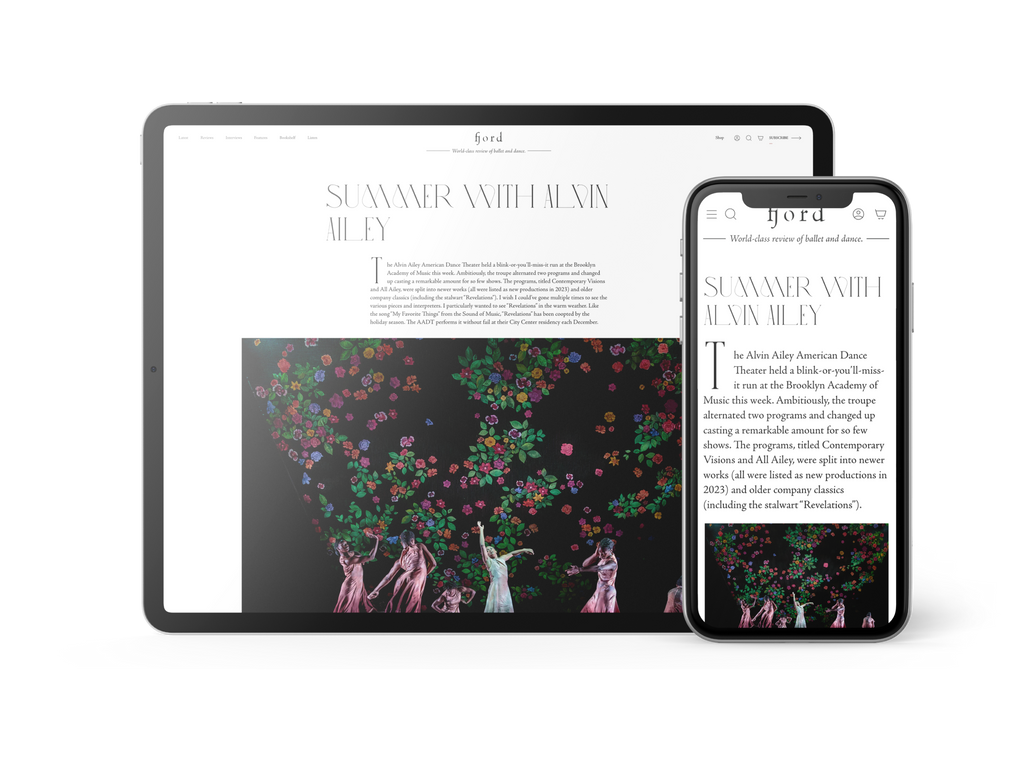Talent Time
It’s “Nutcracker” season at San Francisco Ballet—36 performances packed into three weeks—which means that the company is currently serving two distinct audiences.
Continue Reading
World-class review of ballet and dance.
The aesthetic is clear: a laboratory, all clean, ergonomic surfaces and clinical shiny spaces. Like any future focusing corporation, this is full of smiley, benign worker ants in preppy, GAP like workwear. But this is no prosaic company—this is Nu Life, run by the sinister, megolamaniacal Dr Coppelius. Prototypes of a new doll litter the workspace: arms, heads and swipable screens, where a sex doll—very reminiscent of cinematic babes a la Metropolis, The Fifth Element or Akira are being produced, en masse. Welcome to a clone for the dystopian tomorrow we've been warned about.
Performance
Place
Words

Scottish Ballet “Coppélia” by Jess and Morgs. Photograph by Andy Ross. (1)


“Uncommonly intelligent, substantial coverage.”
Your weekly source for world-class dance reviews, interviews, articles, and more.
Already a paid subscriber? Login
It’s “Nutcracker” season at San Francisco Ballet—36 performances packed into three weeks—which means that the company is currently serving two distinct audiences.
Continue ReadingLast week I caught up with choreographer Pam Tanowitz and Opera Philadelphia’s current general director and president, countertenor Anthony Roth Costanzo to talk about “The Seasons,” the company’s latest production premiering at the Kimmel Center’s 600-plus seat Perelman Theater on December 19.
Continue ReadingIf Notre-Dame remains one of the enduring symbols of Paris, standing at the city’s heart in all its beauty, much of the credit belongs to Victor Hugo.
Continue ReadingWhen dancer and choreographer Marla Phelan was a kid, she wanted to be an astronaut. “I always loved science and astronomy,” Phelan said.
Continue Reading
comments